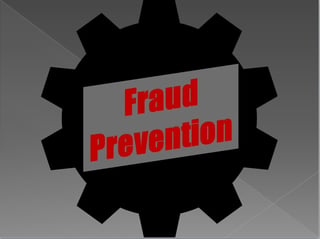 Internal fraud drains more than $3.7 trillion dollars annually from global businesses, according to the Association of Certified Fraud Examiners (ACFE). For manufacturers and production companies, the median internal fraud loss is $194,000.
Internal fraud drains more than $3.7 trillion dollars annually from global businesses, according to the Association of Certified Fraud Examiners (ACFE). For manufacturers and production companies, the median internal fraud loss is $194,000.
Although companies can experience pilferage from customers, vendors and other sources, employees account for the highest losses, when taking into account offenses such as fraudulent insurance claims, unauthorized time off and theft of proprietary information. Crimes can be as simple as stealing company supplies or as complex as sophisticated financial statement fraud.
More specifically, fraud by managers and key executives generates the highest dollar losses because these employees are in a good position to falsify financial, credential, work-related or test-related documents for personal gain.
 What can your company do to prevent theft? The ACFE report found these measures to be effective:
What can your company do to prevent theft? The ACFE report found these measures to be effective:
- Improve internal controls. For example, do not allow the same employee to keep books, collect funds, write checks and reconcile bank accounts. Arrange for monthly bank statements to be delivered unopened to the company owner, who should review them for unusual transactions, such as declining deposits and checks to unfamiliar parties.
- Conduct background checks on new employees.
- Arrange for fraud audits by the company's outside accountants or an internal audit department. CPAs can conduct regular independent internal control studies of cash accounts, bank statements and other items to detect criminal activity. Surprise audits are an effective, yet underutilized, tool in the fight against fraud.
- Be willing to prosecute perpetrators. Some organizations take no legal action because they are afraid of bad publicity, reached a private settlement, wanted closure or considered internal punishment sufficient.
- Provide ethics training for employees. Educate staff members about the possible sources of fraud and consequences, such as the loss of jobs, raises and profits.
- Institute anonymous fraud reporting mechanisms, such as hotlines. Fraud is commonly discovered through tips from employees, vendors, customers or other sources. These people are frequently in a position to see violations of company policies or excessive personal spending by colleagues.
- Install workplace surveillance devices. For example, a video camera monitoring a loading dock where theft is suspected.
- Look for behavioral red flags including the perpetrator living beyond his or her means and having financial difficulties. They can also involve an unwillingness to share duties, a "wheeler-dealer" attitude, divorce or family issues, addiction problems, refusal to take vacations and an unusually close association with vendors or customers.
Take a zero-tolerance stand on fraud. With a few basic procedures in place, internal business theft can be significantly reduced -- or even eliminated -- so your manufacturing business can flourish. Contact us for more information on fraud prevention and read more about our forensic accounting services here.
READ MORE: 10 Steps Business Owners Can Take to Prevent Fraud
© 2017





